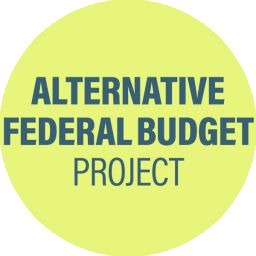Introduction
As the international community continues to advance its efforts to address the global climate crisis, it is becoming increasingly critical for Canada to act as a global climate leader. The Government of Canada must ensure its investments and actions meet or exceed the ambition being set by our global peers, both to contribute our fair share of the global climate effort and to ensure Canada’s long term prosperity in a low-carbon global economy. Such investments will be amply repaid, with environmental, economic, and health benefits.
Canada has seen substantial progress on climate policy in recent years. Federal funding announcements in the 2023 Budget and at the UN Convention on Biological Diversity COP15 in Montreal were welcome commitments to climate mitigation and adaptation. However, Canada will need to effectively use such existing funding and make further complementary investments in order to meet its 2030 and 2050 targets.
Massive public investments are required to steer Canada’s economy toward net-zero.1 A truly ambitious Canadian climate agenda must challenge the vested interests in fossil fuel industries and embed climate, biodiversity and environmental justice goals across government. Ultimately, this approach will lead to transformative progress in advancing environmental, economic, and social prosperity for all peoples in Canada from coast to coast to coast.
Overview
Green public spending
Addressing the twin climate and biodiversity crises and achieving progressive change will require integrating climate and nature across government fiscal policy, budgeting, & spending decisions. A whole-of government approach to aligning public spending with Canada’s climate targets and biodiversity commitments is critical to ensure that allocations are leveraged as effectively as possible and that funding recipients advance environmental, social and economic objectives.
Application of ambitious climate and biodiversity conditions on funding would strengthen the country’s net-zero and nature-positive governance by helping to mainstream priorities across programs and departments, including large federal mechanisms. Failure to apply conditions could result in inefficient spending (e.g., on unproven or costly solutions), creating opportunity costs and entrenching fossil fuel interests.
Long-term security and affordability
As rising interest rates threaten to drive the Canadian economy into recession, replacing volatile fossil fuel energy—a major cause of recent inflation—with more stable, secure renewables would not only directly reduce domestic greenhouse gas emissions but would also improve both energy affordability and resiliency to external shocks like, natural disasters. Amid the long list of climate commitments in Budget 2023, a number of expenditures are more clearly “fossil-friendly” in nature which risk delaying the changes we need to make by entrenching new fossil fuel infrastructure.2
Climate change mitigation
Canada has made increasingly ambitious global commitments and important budget and policy actions on climate mitigation, leading to the suite of actions included in the 2022 emissions reduction plan (ERP). Budget 2023 signalled a turning point for climate action and funding, notably in the clean electricity sector. However, funding solutions still fall short of experts’ recommendations to effectively address the climate crisis and reach the Paris Agreement goals. While the IPCC estimates that around 2.5 per cent of GDP must be invested annually in the energy system to limit warming to 1.5 degrees Celsius,3 Canadian federal climate mitigation spendings only account for 0.5 per cent of GDP.4
On the nature of the solutions, the IPCC clearly states that net emission reductions in the energy system will come from solar and wind penetration, while fossil carbon capture and storage comes last. In terms of infrastructure, key solutions include more efficient buildings and vehicles, as well as public and active transportation.
Climate adaptation
In addition to Canada’s climate mitigation efforts, the federal government should continue to prioritize adaptation planning to respond to future climate change-related disasters and build a more resilient society. The federal government announced a National Adaptation Strategy in November 2022 building on research efforts to understand impacts of climate change, but allocates only $1.6 billion in new future funding over several years. While the broad pillars of the strategy make sense, Canada must enact a renewed financial commitment for adaptive infrastructure.
Biodiversity framework
In light of the historic agreement signed at the Kunming-Montreal Global Biodiversity Framework (KMGBF) in December 2022, a coherent plan to increase the level of financial resources flowing to nature-positive outcomes from all sources is required. As outlined by the Green Budget Coalition in their Recommendations for Budget 2024,5 a 2030 Biodiversity Strategy Financing Plan for Canada should be guided by best practices in conservation, restoration, freshwater and oceans management, negative impact reduction, and data collection. In particular, the achievement of Canada’s Biodiversity Strategy will require a new approach for funding and supporting Indigenous communities’ articulation, implementation, and stewardship of land and water use visions and plans over time.
AFB plan for climate action
Having established this context, the AFB plan for climate action commits to engage all levels of government in a process of transforming Canada’s economy to enable a post-carbon future. The AFB makes several major investments and commitments to facilitate Canada’s climate strategy, including ending fossil fuel production by 2040, decarbonizing key sectors of the Canadian economy, promoting biodiversity and ecosystem recovery, enacting a comprehensive strategy for a green and just transition for Canada’s industrial sectors (see Fair and Equitable Transition Chapter), aligning the financial sector with climate targets (see Regulation chapter), facilitating a green renewal of municipal infrastructure (see Infrastructure and Cities Chapter), and supporting forms of agriculture that are low-emission and more resilient to the changing climate (see Agriculture Chapter).
Actions
Conditional green public investments
The AFB will implement climate and biodiversity conditions for federal funding and procurement to ensure that all levels of Canadian government are compliant with the national climate change strategy. An effective response to the climate crisis must involve coordinated action across all levels of Canadian government (see Fair and Equitable Transition chapter).
The AFB will attach climate-related conditions to funding opportunities available across federal departments, as well as labour and equity conditions where applicable (see Fair and Equitable Transition chapter). As a condition for receiving funds from the federal government, provinces, territories, and municipalities must develop a net-zero target and emissions reduction plan that meets or exceeds the federal target for 2030. Funding recipients under the climate and biodiversity conditions must adhere to requirements for transparency and accountability. The climate and biodiversity conditions extend to project selection. The federal government will prioritize projects with the greatest emissions reduction potential.
Phasing out high-carbon investments
The AFB will place an immediate moratorium on new fossil fuel extraction and exploration projects and implement a regulatory phase out of oil, natural gas, and coal production for fuel by 2040. Furthermore, the AFB will eliminate all federal subsidies and financial support to the fossil fuel industry by the end of 2024. Continued financial support of the fossil fuel industry by all levels of government in Canada is a direct contravention of Canada’s climate responsibilities. The AFB commits to transparent accounting and elimination of all forms of federal financial support to the industry, including tax measures, royalty reductions, loans, guarantees, grants, equity, and funding for research and development (see Tax chapter).
The AFB will cancel the Investment Tax Credit for Carbon Capture, Utilization, and Storage and redirect the proposed spending of about $9.1 billion6,7 to climate initiatives compatible with a fossil-fuel-free economy by 2050. While carbon capture, utilization, and storage (CCUS) technologies will play a role in the transition to a post-carbon-emitting economy, many climate science and policy experts8 have warned against over-reliance on CCUS because it is based on long-term fossil fuel production. To the extent that CCUS will play a role in decarbonizing the Canadian economy, the costs should be borne by industry and not by the public.
Climate mitigation through decarbonization of key sectors
The AFB will commit an investment of $15 billion over five years to achieve the decarbonization of Canada’s electricity sector by 2035. Budget 2023 saw unprecedented support for clean electricity infrastructure. This down-payment was crucial for kick-starting this transformation of Canada’s electricity system, but the vast majority of the new funding is corporate subsidies rather than direct public investment. To achieve decarbonization of the electricity sector by 2035, the AFB invests $10 billion over five years in direct public investments to expand zero-emissions electricity production, improve infrastructure that transmits and stores clean energy, and promote best practices in clean electricity planning and governance. The AFB will direct an additional $4.8 billion toward zero-emission energy programs designed to benefit Indigenous communities, Northern and remote communities, low-income Canadians, and other vulnerable groups.
This AFB will commit to an investment of $12.5 billion over five years to jumpstart a national renovation wave that accomplishes the deep decarbonization of buildings and residential homes by 2050. Buildings and residential homes account for approximately 13 per cent of Canada’s greenhouse gas emissions. To meet Canada’s emission reduction goals, it will be necessary to address the carbon-emissions impact of 600,000 homes and over 30 million square metres of commercial space by 2040. Property owners must invest over $20 billion annually to accomplish a 90 per cent reduction in building-based emissions by 2050. The AFB will provide $10 billion annually to cover 50-75 per cent of the additional costs of climate retrofitting of residential homes, with an additional $2 billion per year allocated to no-cost renovations for low-income households and social housing. A further $540 million a year will be allocated for building retrofits and energy efficiency top-ups in Indigenous communities (see the First Nations chapter).
This AFB will commit to taking further action to decarbonize the transportation sector by increasing the cost of high-emissions vehicles and making zero-emissions vehicles more affordable and accessible.
This AFB will quickly move forward with a Clean Car Standard. These regulations will effectively ban the sale of gasoline-powered cars in 2035 by requiring that an escalating percentage of new cars sold be zero emission vehicles and by issuing fines to automakers that don’t shift their business plans to align with a net-zero future.
The AFB will replace the current federal incentive program for EV purchases with a revenue-neutral fee-bate system that charges a fee on more polluting vehicles and uses the revenue to pay for EV subsidies.
Climate adaptation
The AFB will invest an additional $10 billion per year over the next five years to implement the National Adaptation Strategy. The Natural Infrastructure Fund should be expanded to provide watershed-level planning and design to target key ecosystem services such as climate regulation, water filtration, and stormwater management to enhance local resilience to erratic storm events in addition to protection and restoration planning that is already underway. Adaptation funding directed to regional, provincial, territorial and local governments should be made conditional on them having an adaptation plan in place, in order for the funding to support the immediate and longer term implementation of their plans.
Indigenous-led biodiversity conservation and restoration The AFB will establish sufficient permanent funding for Indigenous-led conservation efforts and move forward with genuine nation-to-nation models of co-governance of protected lands that respect the rights of Indigenous Peoples laid out in UNDRIP (see First Nations chapter).
The AFB will direct an additional $500 million over seven years towards establishing the Canada Target 2 Restoration Fund to restore degraded terrestrial habitat that is not included within the Nature Smart Climate Solutions Fund or the 2 Billion Tree program. The AFB will also provide $5 billion over five years towards the remediation of old fossil fuel sites, wells and tailings ponds, with priority to areas where resource development has adversely affected Indigenous peoples’ rights and title. Because this clean-up is the responsibility of the oil and gas industry, an offsetting tax will be placed on the industry so that this funding does not become another subsidy.







